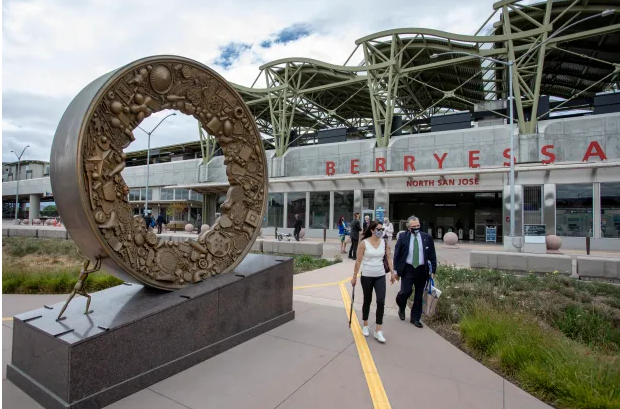The big news in San Jose is the potentially catastrophic impact of development plans being submitted while the city is out of compliance with its Housing Element. In most jurisdictions, “Builder’s Remedy” projects generally expand the places where housing can be built and override limits on the number of homes that can be built, but opportunistic developers in San Jose are proposing significant reductions to plans that have already been approved.
The very worst of these is a new plan for the 61-acre flea market site at the Berryessa BART Station, which reduces the planned housing from more than 3,400 homes (more than 500 of them affordable) to just 940 total, replacing higher-density apartments with expensive townhomes and condos. District Four Councilman David Cohen, State Assemblymember Alex Lee, and San Jose Mayor Matt Mahan have each accused the developer of abusing the Builder’s Remedy provision of the law.
Why is this proposed development so objectionable?
It abandons the developer’s commitment to produce a significant number of homes, including affordable rental homes, in this community while we are at ground zero for the housing affordability crisis. Instead of providing more than 500 affordable homes as previously agreed, which would give lower-income families great transit access to the region’s job centers and opportunities, the developer now wants to provide only a little over a third of that number. Leaving more than 2,000 homes on the table impacts so many of us and our neighbors; it impacts our ability to realize an end to the housing affordability crisis that we see the impact of every day on our city’s streets, along our creeks, and in our parks.
It fails to leverage billions of dollars of taxpayer money. A significant amount of federal, state and local money has been spent to extend BART to Berryessa and on to Downtown San Jose, intended to connect thousands of residents and workers in the station areas within the region. Now, instead of the promised thousands of jobs and homes for our public investment, the developer wants to build only a relative handful of expensive low-density townhomes.
Transit-oriented development, where lots of housing and jobs are built near a transit stop, is key to accommodating growth: ensuring people of all incomes have access to the resources and opportunities they need while reducing greenhouse gas emissions and traffic congestion. With the proposed dramatic reduction of homes, the former flea market site will be occupied mostly by wealthier homeowners, who are less likely to use transit- and more likely to hit the roads in cars. Instead of reducing greenhouse gas emissions and traffic congestion, it will add more.
Together with the elimination of significant office development, the proposed loss of homes would significantly undermine efforts to create a diverse and multifaceted neighborhood while housing thousands of San Joseans to maximize the benefits from the public investment in the new BART station.
